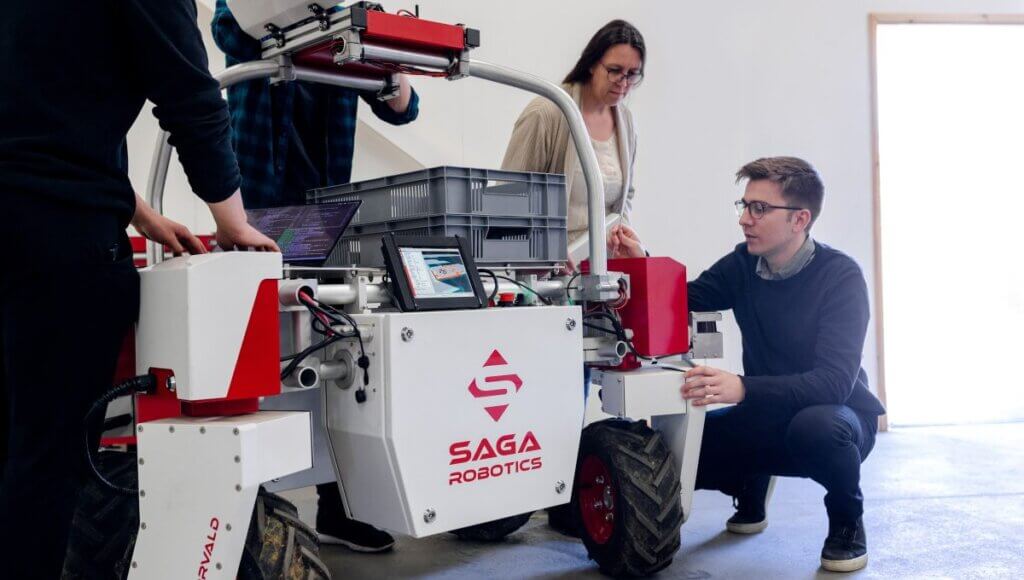7 . Inspect and Adapt, with Respect
“Before We Make Product, We Make People.”

By Jeff Gothelf
If you have spent any time with the Lean or Agile community, you have heard the phrase “go to the gemba.” Ask what it means and you will get a fairly consistent answer of “go to where the work is being done and observe.”
Gemba literally translates from Japanese into “actual place.” In other words, instead of making a series of assumptions about what is happening and why, go and see for yourself. Lean practitioners and Agile coaches regularly visit the teams they work with, their places of work, and observe how work gets done looking for opportunities for improvement (Kaizen).
Product designers and researchers also practice this. While they may not use Lean language like “go to the gemba,” they have advocated for decades to eschew assumptions about why customers and users behave in certain ways with our products and services and, instead, to go and see this behavior first-hand.
In fact, they observe, take notes, ask questions and draw some conclusions about how to iterate the product forward. One can easily argue this is standard user experience design practice.
GEMBA ⇒ “real place” (work spot).
KAIZEN ⇒ “change for better” (also known as Continual Improvement).
GEMBA KAIZEN ⇒ “continual improvement at the real place.”
It is all about:
- Identifying muda
- Reducing muda
- Eliminating muda
“Muda” means “waste,” “non-value adding activities” or “obstructions to flow” from your work processes. Any process or activity that does not add value. They do not help your business or workers in any way. They increase costs and make tasks take much longer than they should
WE FORGOT ONE THING
I recently went back to read a John Shook’s article about going to the gemba, and there was a part of the process that seems to get less frequently repeated with the phrase “go and see.”
Shook notes that the original phrase from Toyota Chairman Fujio Cho stated, “Go see, ask why, show respect.” We do not talk a lot about that last part — show respect. And it is critical to the success of any change or transformation initiative we undertake with our teams.
The overwhelming majority of our teams, leaders and customers have good intentions. They want to be successful. They want to come to work every day, do good work, feel productive and effective and help the company be successful. In the case of customers, they want to make themselves successful.
The mere act of showing up to observe a worker or customer in their “actual place” of work creates tension. Many folks believe that if you are there to observe them, they must be doing something wrong. The same goes for customers. I have lost count of how many participants in usability tests have apologized for their inability to complete a task.

As change agents — whether you are designing a product, transforming an organization, implementing OKRs, coaching Agile teams, etc. — it is imperative that we show respect to the people we work with and influence. We must default to a point of view that these folks are doing their best and make it clear to them that we are there to make them even more successful.
We are not there to make them feel stupid or useless. We are not there to point out their mistakes. Instead, we are there to understand the root cause for the current behavior and work with them to improve their efficiency, productivity and customer-centricity.
Their insight is invaluable. They know the most about their place of work, its challenges and opportunities for improvement. The answers you are seeking as a change agent are likely somewhere within their expertise, knowledge and experience.
By treating our teams, coachees and customers with respect, we learn from them and earn their trust. When it comes time to make change, that trust enables us to challenge current practices and behaviors. It buys us the political capital to propose new ways of working that may initially be uncomfortable for them, but because we have treated them with respect they afford us the opportunity to run our next experiment.
Going to the gemba is critical to building better teams, organizations and products. However, coming into these situations with the attitude that we know best and the people we are trying to change could not do it without us ensures our transformation efforts will meet with resistance and likely not succeed.
John Shook learned about lean management while working for Toyota for 11 years in Japan and the US, helping it transfer production, engineering, and management systems from Japan to NUMMI and other operations around the world.
Shook co-authored “Learning to See,” the book that introduced the world to value-stream mapping. He also co-authored “Kaizen Express,” a bi-lingual manual of the essential concepts and tools of the Toyota Production System. With “Managing to Learn,” Shook revealed the deeper workings of the A3 management process that is at the heart of Toyota’s management and leadership.
On John Shook’s own words…
“Go see, ask why, show respect” is the way we turn the philosophy of scientific empiricism into actual behavior. We go observe what is really happening (at the gemba where the work takes place), while showing respect to the people involved, especially the people who do the real value-creating work of the business.
Concluding a recent gemba walk, the question came up, ‘What do you look for…?’ Here are some guidelines I use when doing a gemba walk as an outside advisor….”

Go See
We want to understand every gemba from the standpoints of Purpose, Process and People.
Asked most simply and directly: is management working to align people and process to achieve purpose? Are processes designed to enable people to work toward achieving organizational purpose?
Here are some questions to dig deeper into this:
- What is the purpose of this gemba and of the broader organization? Are they aligned? Can you see that alignment in the process and the people?
- Are processes designed consistently to achieve the purpose?
- Are people engaged in working to achieve the purpose, and are they supported in this work by the processes?
Ask Why
How do we go about understanding the gemba-as-system?
To observe with a Kaizen view, it is useful to start your gemba walk as close as possible to the customer and work your way back, considering “what would flow look like?” throughout. Think system as well as individual process.
Although it is the second element of “go see, ask why, show respect,” “why?” is not actually the first question we want to ask at the gemba. First ask what, then why, then what if…and, finally, why not.
The purpose and process of asking why? Stand and observe. Your car has a GPS. But you need a GTS –a Grasp The Situation process. We need to train our lean eyes to see and minds simply to ask what first. Asking why – to diagnose – comes later. As David Verble says, “Ask no ‘why?’ before its time.”
Show Respect
Lean thinking mandates that we show respect to all the people, especially the people who do the value-creating work of the business, the activities that create value for customers.
When visiting any gemba, through showing respect for the workers we also show respect for customers and the company, analyzing for evidence of disconnects between stated objectives, perhaps expressed in the organization’s “true north” visions statements, versus what we actually observed at the gemba.
Always look for signs of disrespect toward:
- Workers – especially muri or overburden
- Customers – poor delivery or poor quality – especially from controllable mura or fluctuation and variation
- The enterprise itself – found in problems and muda or waste, in all its forms
But the worker is the first and best place to look. Think of building your operating system from the value-creating worker out. Observe the worker and steadily take away each and every bit of nonvalue-creating “work.”

Continue doing that, engaging the worker in the process, until nothing is left except value-creating work, until all the waste has been eliminated and non-value-creating work isolated and taken away.
To achieve that level of lean-ness, you will find that you will simply have to engage the hearts and minds of the people doing the work.
Once we have recognized that we have no choice but to rely on our employees, it is easy to see the next step, which is that we need to develop them.
A Note on Gemba-Based Leadership
Everywhere we go, we still find overwhelming evidence that the conventional view of leader as answerman (or woman) – the leader who always has a ready answer and whose answer always right – remains strong. And, certainly, the leader’s role in providing vision, direction, showing the path to true north is foundational to lean success.
But we also see overwhelming evidence of the damage done by the broadcast of executive answers that reverberate negatively throughout the organization.
It is easy for leaders to cause more trouble than they alleviate – CEOs who try to directly eliminate waste often cause more waste than they prevent!
Whenever prescriptions are issued from afar, bad things are likely to happen. The best antidote we know? Confirm what is actually happening, as it is happening. Diagnose and prescribe as close in time and place as possible to the work. We think it is one of the most important principles and practices of lean management.
John Shook
The next time you kick off a new change program or new way of working, engage the teams with respect and understand why things work the way they do now. As Shook said in his article, “Before we make product, we make people.”
I am Jeff Gothelf and these are my agile-thoughts
2021 © Barcelona, SPAIN by Jeff Gothelf

Jeff helps organizations build better products and executives build the cultures that build better products. He is the co-author of the award-winning books “Lean UX,” “Sense & Respond” and “Forever Employable.”
Starting off as a software designer, Jeff now works as a coach, consultant and keynote speaker helping companies bridge the gaps between business agility, digital transformation, product management and human-centered design.
Most recently Jeff co-founded Sense & Respond Press, a publishing house for practical business books for busy executives. Jeff used to work in the circus a long time ago 🙂
If you learnt something, share it!
